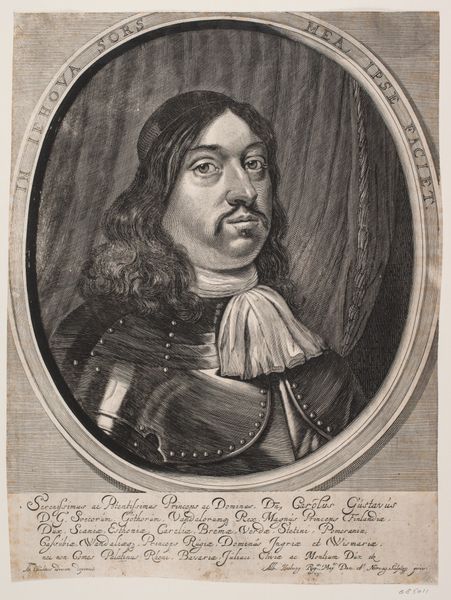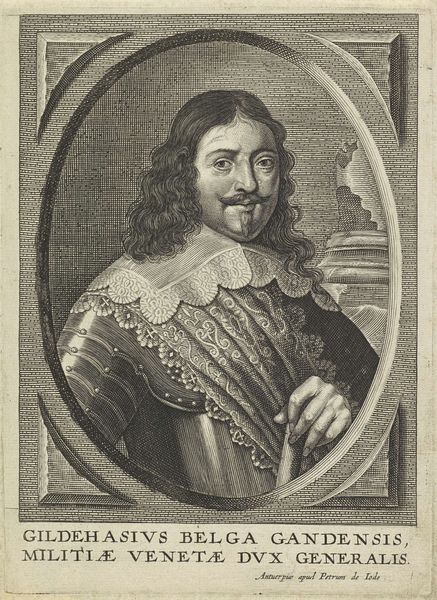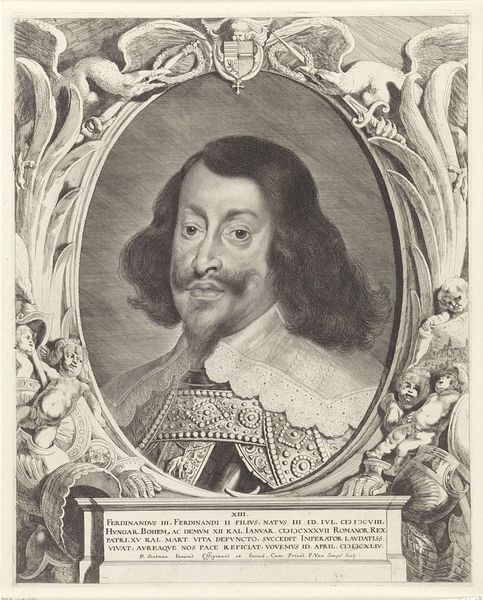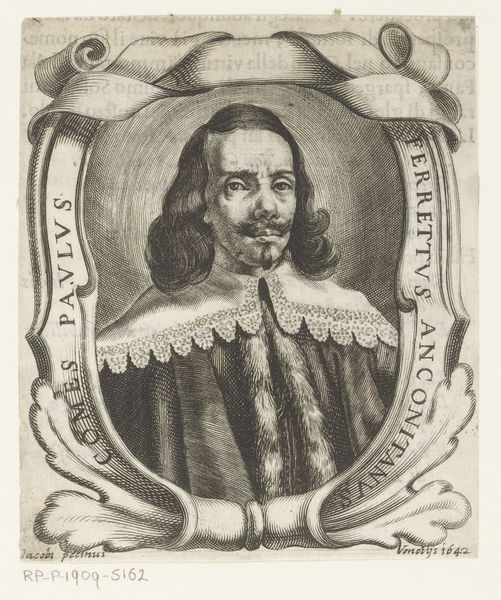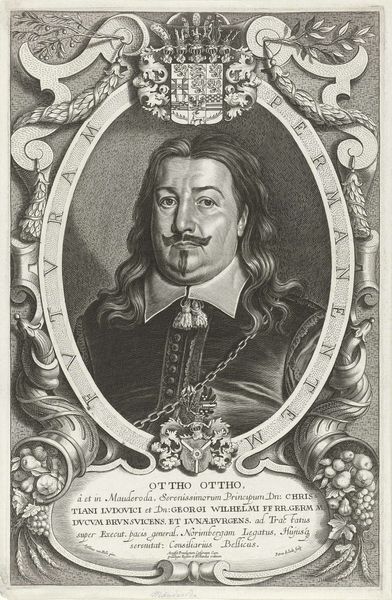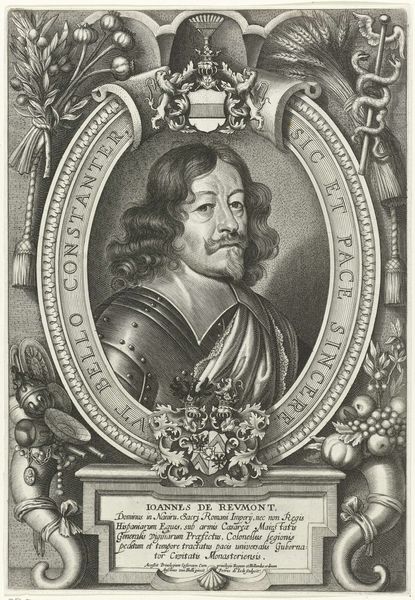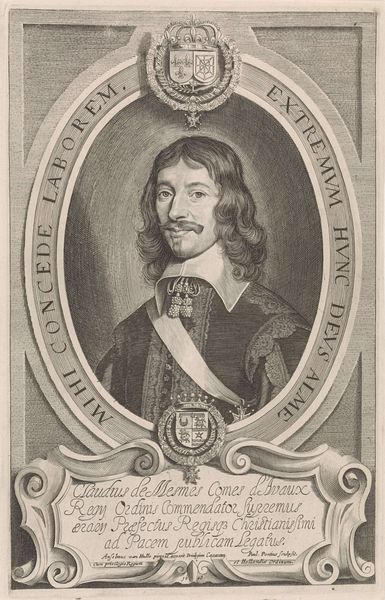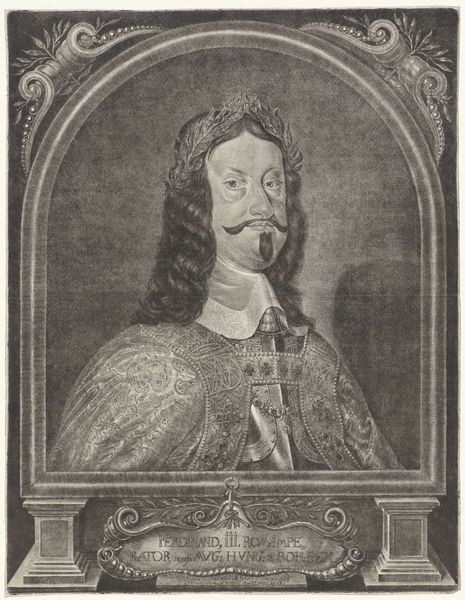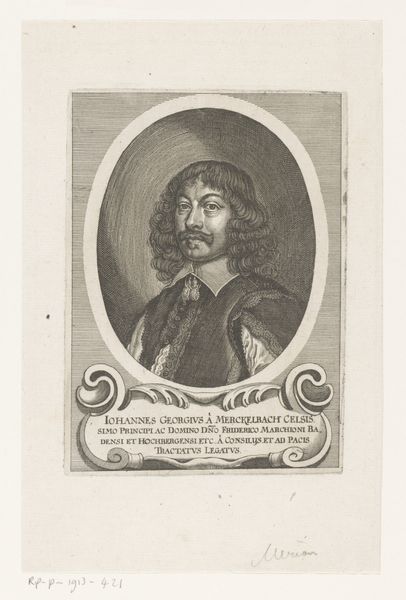
print, metal, engraving
#
portrait
#
baroque
# print
#
metal
#
old engraving style
#
portrait reference
#
history-painting
#
engraving
Dimensions: height 145 mm, width 109 mm
Copyright: Rijks Museum: Open Domain
Editor: This is an engraving from 1648, titled "Portret van Ferdinand III, Duits keizer" by Elias Widemann, currently housed in the Rijksmuseum. I find it quite striking, a very formal portrait encased in an oval frame; the detail in the metalwork and the clothing is incredibly intricate. What really grabs your attention when you look at this piece? Curator: Ah, Ferdinand III! To me, it's a window into a world of power, perception, and, dare I say, carefully cultivated image. Look closely; the engraver doesn’t just depict a man, but crafts a carefully constructed symbol. The oval frame almost feels like a coin, doesn’t it? Commemorating his reign, attempting to cement his legacy. Consider the context. 1648... the end of the Thirty Years’ War. Europe was in turmoil, exhausted. Editor: So this portrait might have a propaganda purpose? To show power at a time of uncertainty? Curator: Precisely! The intricate detail in his attire, the stern expression, the very deliberate composition... they all speak to a desire to project strength and stability, in the face of widespread devastation. The detail feels almost…obsessive. And isn't that the funny thing about power? It’s often at its most extravagant when it feels most threatened. What do you think about the backdrop itself? It looks like an open tent, in a sort of blurred-out landscape. Almost theatrical, right? Editor: It definitely adds to the drama. It makes it more like a scene than a straight portrait. Curator: Exactly! And to think this was mass-produced – a printed image distributed widely. Fascinating, isn’t it, how art can serve as both a mirror and a shaper of its time? Editor: Definitely gives me a different perspective on portraits. There is so much more than just representing the way someone looks. Thanks!
Comments
No comments
Be the first to comment and join the conversation on the ultimate creative platform.

